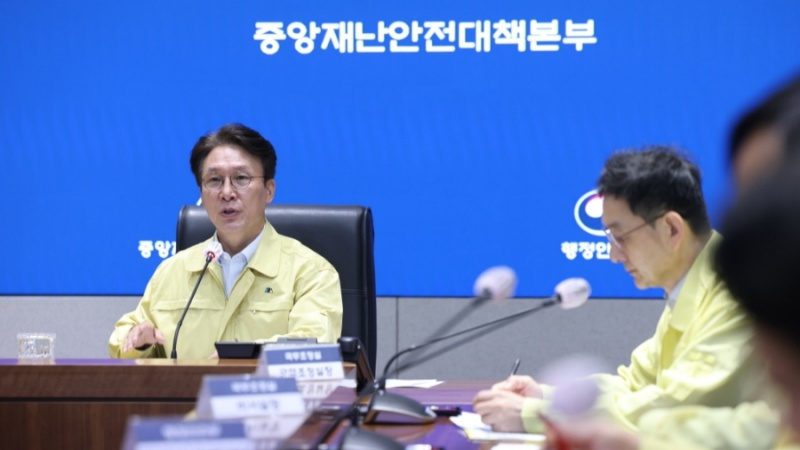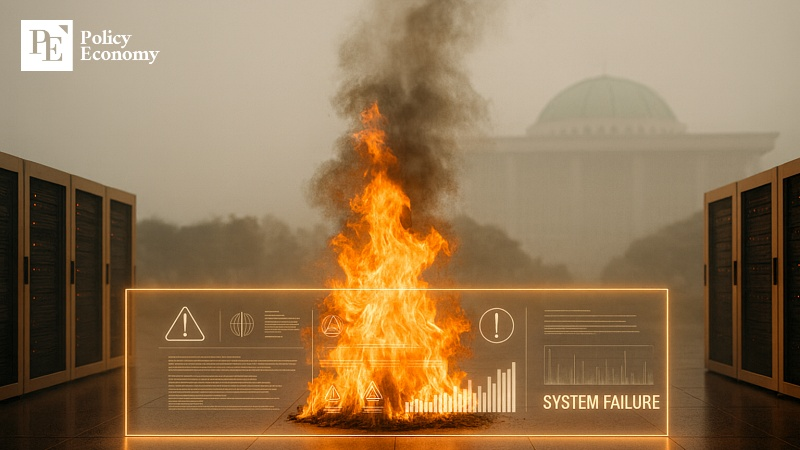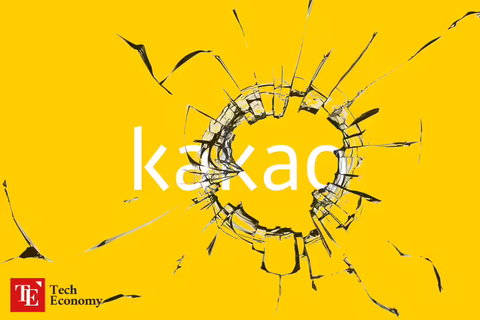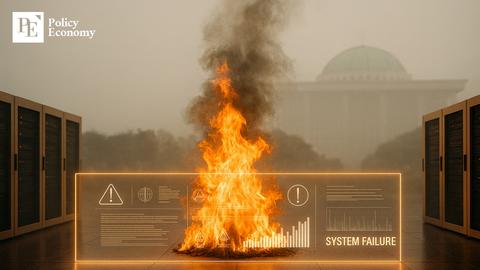A Single Fire Cripples 647 Systems: Repeated Outages Undermine Korea’s “Digital Government” Vision
Input
Modified
Public Inconvenience Mounts, Fragility Exposed
Partisan Wrangling Overshadows Follow-up Measures
IT Infrastructure Doubts Escalate Into Security Threat

A fire at the National Information Resources Service (NIRS) data center in Daejeon shut down 647 government information systems simultaneously, exposing the fragile underbelly of Korea’s push for a “digital government.” Just three years ago, officials boasted that all public systems could be restored within three hours, citing lessons from the Kakao data center outage. In reality, recovery is now dragging into its fourth day, leaving citizens increasingly frustrated. Analysts point to the government’s neglect of cloud-based disaster recovery systems as a core vulnerability. Yet the political arena has turned the crisis into another round of partisan sparring, with little substantive discussion of structural remedies. Experts warn that this episode, tied directly to national security, underscores a systemic failure of management and demands an urgent, comprehensive review.
Mobile IDs Exposed as “Blockchain in Name Only”
According to government data on the 30th, of the 647 systems disabled by the fire, only 89 had been restored as of 1 p.m.—a recovery rate of 13.7%. Of 36 services classified as top priority, more than half—20 systems—remain down. While services such as Government24, the mobile ID platform, and the procurement system have come back online, many core administrative procedures remain paralyzed. Authorities say they are prioritizing critical systems, but the scale of disruption makes a quick fix unlikely.
The incident stemmed from a fire on the 26th in Server Room 7-1 at the NIRS facility in Sejong. The blaze broke out during lithium-ion battery replacement, damaging key equipment and knocking out hundreds of government systems. Extinguishing the fire took nearly two days. Police, fire officials, and a dedicated lithium battery task force are still investigating the cause. In the immediate aftermath, airports and hospitals across the country were unable to verify mobile IDs, residents’ centers saw kiosks go dark, and staff reverted to paper-based processes.
The government initially focused on restoring priority services. The Ministry of the Interior and Safety instructed agencies to accept applications in person or by mail, while some institutions set up temporary websites. Yet 96 systems directly damaged in the blaze—including veterans’ services, the national grievance portal, and the legislative database—must be rebuilt at the Daegu center, with officials admitting that recovery will take at least four weeks. Even with cooperation from firms already based there, a prolonged disruption appears inevitable.
The impact has been felt widely. At residents’ centers, paper-based processing has led to misfiled or incomplete applications; real estate transactions have been delayed due to disrupted access to land records; funeral arrangements were complicated when crematorium reservations could only be made by phone; and while some postal and financial services have resumed, international express mail and e-commerce remain suspended.
Adding to public anger is the revelation that Korea’s mobile ID system, promoted as being secured by distributed blockchain storage, in fact relies on a central server at NIRS. Blockchain’s strength lies in eliminating single points of failure through distributed nodes. But by funneling critical interfaces into one location, the system amounts to “blockchain in name only.” The fire demonstrated how a single point of failure can cascade into national-scale paralysis, highlighting the gap between blockchain’s promise and Korea’s centralized e-government infrastructure.
“Blame Game” Replaces System Reinforcement
The political fallout has been immediate. The opposition has directly targeted the president and the Minister of the Interior and Safety. Rep. Na Kyung-won of the People Power Party posted on Facebook that President Lee Jae-myung should dismiss Interior Minister Yoon Ho-jung and apologize to the public. Floor leader Song Eon-seok echoed the call, calling the shutdown of 647 systems “a disaster-level failure far worse than 2023,” and insisting that both the president and minister bear responsibility. The opposition’s logic is pointed: as party leader in 2023, Lee himself demanded the same accountability from the previous government.
In November 2023, a similar outage knocked out core services including the local government “SaEol” network, Government24, the police text system, and the procurement portal. Then-opposition leader Lee criticized President Yoon Suk-yeol and called for the dismissal of Interior Minister Lee Sang-min. At the time, he charged that “the public has endured more than a week of inconvenience while the government blames others and shirks responsibility,” stressing that “with authority comes accountability.” The Democratic Party labeled the incident “a failure of competence” and escalated demands for the minister’s resignation.
Under pressure, the Interior Ministry belatedly pledged reforms. Then-Minister Lee Sang-min vowed to classify IT shutdowns as disaster events, standardize recovery procedures, and form a task force to investigate causes and prevent recurrences. Plans included technical audits, redundancy upgrades, backup expansion, and workforce increases. Yet little progress materialized in implementation, and the latest fire has laid bare the failure to deliver on those promises.
Now, the same political theater is repeating itself. The opposition is recycling past accusations, while the ruling camp urges focus on damage control. But neither side is addressing the deeper structural vulnerabilities of government networks. The debate fixates on “who should step down,” while investment in resilience and disaster response again slips down the agenda—leaving citizens to bear the brunt.

Time to Reassess the “Digital Government” Strategy
This crisis goes beyond inconvenience, posing real risks to the continuity of government. After the 2022 Kakao data center fire, officials promised that public networks had real-time backup and could be restored within three hours. The protracted paralysis has revealed the yawning gap between pledge and reality. Public scrutiny has shifted from “why did it fail” to “can services switch over immediately.” Confidence now hinges on recovery time objectives, the effectiveness of backups, and the readiness of alternate pathways.
Experts point out that most government systems rely on simple storage backups or server duplication. When physical infrastructure is damaged, failover is not seamless. A true “active-active” disaster recovery model requires geographically distributed networks, near-instant application failover, and automated rerouting of authentication services—standards Korea’s public sector has yet to achieve. Without standardized switchover protocols, disruptions to execution layers, domain translation, and authentication services are inevitable, delaying full restoration.
Such vulnerabilities extend well beyond administrative inconvenience. In the event of a large-scale cyberattack or wartime contingency, the paralysis of essential systems for security, procurement, or fiscal settlement would cripple synchronization between central and local operations, undermining government command and control. If authentication modules, integrated platforms, and emergency communication channels were simultaneously disabled, decision-making would stall, resource allocation would freeze, and critical response time would be lost. This incident has thus raised fundamental questions about whether Korea can ensure continuity of government in crises.
The repeated collapse of government networks also threatens Korea’s long-touted reputation as a leader in “digital government” and advanced IT. The credibility of digital administration is a strategic asset tied to foreign investment, international cooperation, and exports of e-government solutions. But persistent instability in public infrastructure risks eroding trust. Even a temporary halt in services can tarnish the reliability ratings of Korea’s digital platforms and weaken confidence in cross-border data partnerships. Disaster recovery and operational resilience have become issues not just of domestic governance but of economic and diplomatic significance. Concrete legal and institutional reforms are now essential if Korea is to restore confidence in its digital state.






















Comment